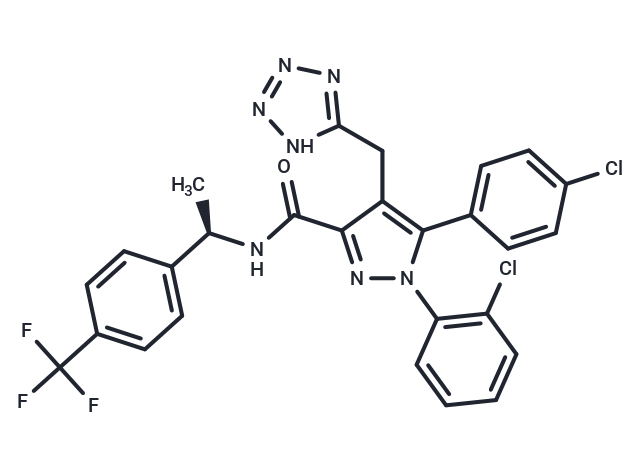Shopping Cart
- Remove All
 Your shopping cart is currently empty
Your shopping cart is currently empty

CB1 antagonist 4 is an inverse agonist of cannabinoid receptor 1 (CB1) with an IC50 of 0.4 nM. It can reduce body weight, improve plasma inflammatory markers, and enhance glucose homeostasis [1].

| Pack Size | Price | Availability | Quantity |
|---|---|---|---|
| 10 mg | Inquiry | 10-14 weeks | |
| 50 mg | Inquiry | 10-14 weeks |
| Description | CB1 antagonist 4 is an inverse agonist of cannabinoid receptor 1 (CB1) with an IC50 of 0.4 nM. It can reduce body weight, improve plasma inflammatory markers, and enhance glucose homeostasis [1]. |
| Molecular Weight | 586.40 |
| Formula | C27H20Cl2F3N7O |
| Cas No. | 1034264-77-1 |
| Storage | Powder: -20°C for 3 years | In solvent: -80°C for 1 year | Shipping with blue ice. |

Copyright © 2015-2025 TargetMol Chemicals Inc. All Rights Reserved.